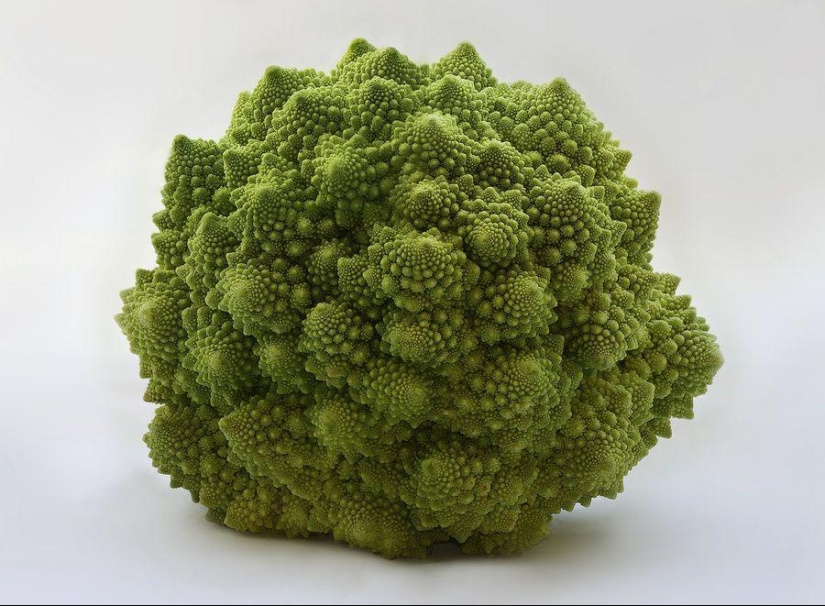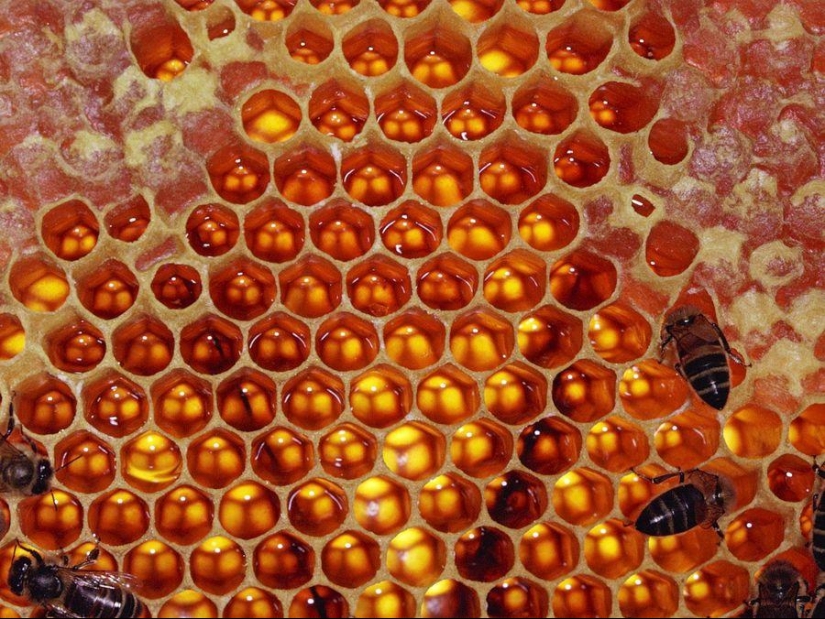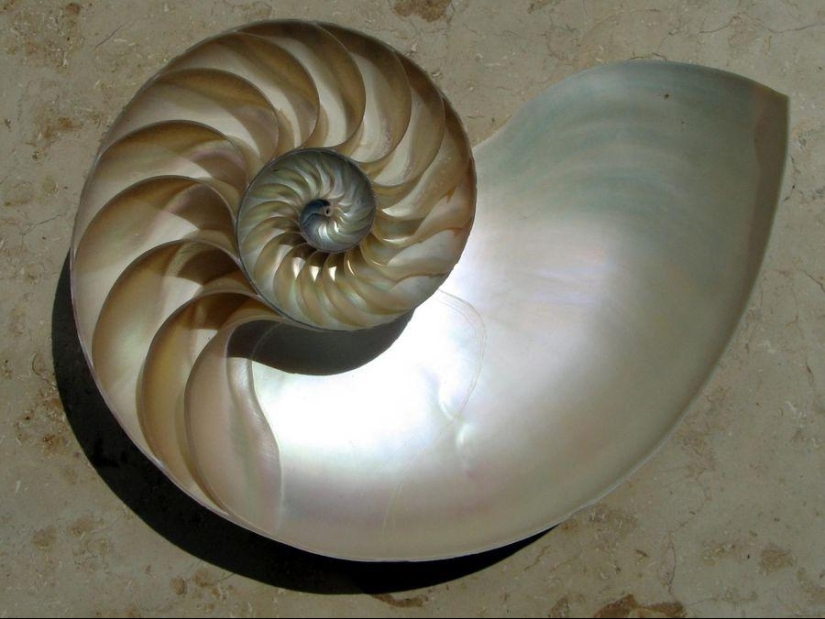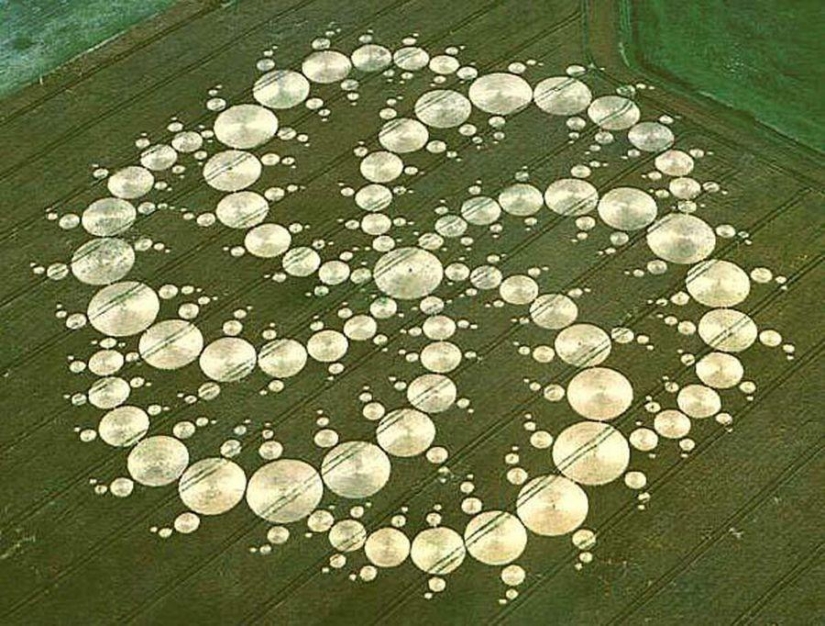10 Great Examples of Symmetry in Nature
Categories: Nature
By Pictolic https://pictolic.com/article/10-great-examples-of-symmetry-in-nature.htmlFor centuries, symmetry has remained a subject that fascinates philosophers, astronomers, mathematicians, artists, architects and physicists. The ancient Greeks were completely obsessed with it - and even today we tend to see symmetry in everything from furniture arrangement to hair cutting.
Just keep in mind that once you realize this, you are likely to have an overwhelming urge to look for symmetry in everything you see.


Broccoli romanesco
Perhaps when you saw Romanesco broccoli in the store, you thought it was another example of a genetically modified product. But in fact, this is another example of the fractal symmetry of nature. Each broccoli inflorescence has a logarithmic spiral pattern. Romanesco is similar in appearance to broccoli, but in taste and texture - to cauliflower. It is rich in carotenoids, as well as vitamins C and K, which makes it not only beautiful, but also healthy food.

honeycombs
For thousands of years, people have marveled at the perfect hexagonal shape of the honeycomb and wondered how bees can instinctively create a shape that humans can only reproduce with a compass and straightedge. How and why do bees have an urge to create hexagons? Mathematicians believe that this is the ideal shape that allows them to store the maximum amount of honey possible using the minimum amount of wax. In any case, it's all a product of nature, and it's pretty damn impressive.

sunflowers
Sunflowers boast radial symmetry and an interesting type of symmetry known as the Fibonacci sequence. Fibonacci sequence: 1, 2, 3, 5, 8, 13, 21, 34, 55, 89, 144, etc. (each number is determined by the sum of the two previous numbers). If we took our time and counted the number of seeds in a sunflower, we would find that the number of spirals grows according to the principles of the Fibonacci sequence. In nature, there are so many plants (including romanesco broccoli) whose petals, seeds and leaves follow this sequence, which is why it is so difficult to find a four-leaf clover.
But why do sunflowers and other plants follow mathematical rules? Like the hexagons in the hive, it's all a matter of efficiency.

Nautilus shell
In addition to plants, some animals, such as the Nautilus, follow the Fibonacci sequence. Nautilus shell twists into a "Fibonacci spiral". The shell tries to maintain the same proportional shape, which allows it to maintain it throughout its life (unlike people who change proportions throughout their lives). Not all Nautiluses have a Fibonacci shell, but they all follow a logarithmic spiral.
Before you envy mathematician clams, remember that they do not do this on purpose, it is just that this form is the most rational for them.

Animals
Most animals are bilaterally symmetrical, which means they can be split into two identical halves. Even humans have bilateral symmetry, and some scientists believe that human symmetry is the most important factor that influences our perception of beauty. In other words, if you have a one-sided face, then you can only hope that this is compensated by other good qualities.
Some reach complete symmetry in an effort to attract a partner, such as a peacock. Darwin was positively annoyed by this bird, and wrote in a letter that "The sight of the peacock's tail feathers, whenever I look at it, makes me sick!" To Darwin, the tail seemed cumbersome and made no evolutionary sense, as it did not fit with his theory of "survival of the fittest". He was furious until he came up with the theory of sexual selection, which claims that animals develop certain features to increase their chances of mating. Therefore, peacocks have various adaptations to attract a partner.

Web
There are about 5,000 types of spiders, and all of them create a near-perfect circular web, with nearly evenly spaced radial support threads and a spiral web to catch prey. Scientists aren't sure why spiders love geometry so much, as tests have shown that a round web won't lure food any better than an irregularly shaped one. The scientists suggest that the radial symmetry evenly distributes the force of impact when the victim is caught in the net, resulting in fewer breaks.
Crop Circles
Give a couple of tricksters a board, mowers, and saving darkness, and you will see that people also create symmetrical shapes. Due to the complexity of the design and incredible symmetry of crop circles, even after the creators of the circles confessed and demonstrated their skills, many people still believe that space aliens did it.
As the circles become more complex, their artificial origin becomes more and more clear. It is illogical to assume that the aliens will make their messages more and more difficult when we have not been able to decipher even the first of them.
Regardless of how they came about, crop circles are a pleasure to look at, mainly because their geometry is impressive.
Snowflakes
Even such tiny formations as snowflakes are governed by the laws of symmetry, since most snowflakes have hexagonal symmetry. This is partly due to the way water molecules line up when they solidify (crystallize). Water molecules solidify by forming weak hydrogen bonds as they align in an ordered arrangement that balances the forces of attraction and repulsion to form the snowflake's hexagonal shape. But at the same time, each snowflake is symmetrical, but no snowflake is alike. This is because as it falls from the sky, each snowflake experiences unique atmospheric conditions that cause its crystals to align in a certain way.

Milky Way Galaxy
As we have seen, symmetry and mathematical models exist almost everywhere, but are these laws of nature limited to our planet? Obviously not. A new section has recently been discovered at the edge of the Milky Way Galaxy, and astronomers believe the galaxy is a near-perfect mirror image of itself.

Sun-Moon Symmetry
Considering that the Sun is 1.4 million km in diameter and the Moon is 3474 km, it seems almost impossible that the Moon can block sunlight and provide us with about five solar eclipses every two years. How does it work? Coincidentally, along with the fact that the Sun is about 400 times wider than the Moon, the Sun is also 400 times further away. Symmetry ensures that the Sun and Moon are the same size when viewed from Earth, and so the Moon can cover the Sun. Of course, the distance from the Earth to the Sun can increase, so sometimes we see annular and partial eclipses. But every year or two, a fine alignment occurs and we witness a spectacular event known as a total solar eclipse. Astronomers don't know how common this symmetry is among other planets, but they think it's pretty rare. However, we should not assume that we are special, as this is all a matter of chance. For example, every year the Moon moves away from the Earth by about 4 cm, which means that billions of years ago, every solar eclipse would have been a total eclipse. If things continue like this, then total eclipses will eventually disappear, and this will be accompanied by the disappearance of annular eclipses. It turns out that we are simply in the right place at the right time to see this phenomenon.
Recent articles

What kind of wedding traditions do not happen! The Scots pour dirty slush over the bride, some peoples of India have decided to get ...

Every parent who has a toddler of kindergarten age growing up knows that the most terrible sound in the house, which causes ...
Related articles

Is age just a number in your passport? Yes, because sometimes you can become a real old man in your thirties, and some of them are ...

What better way to warm up in the winter time than mulled wine, a warm hug and a hot movie? Some Hollywood blockbusters over the ...

Citrus fruits will not surprise us — many people add lemon to tea every day, and tangerines are bought not only for the New Year. ...

Reddit users gathered once and let's brag about who and what they treat in school canteens. Both the students themselves and their ...